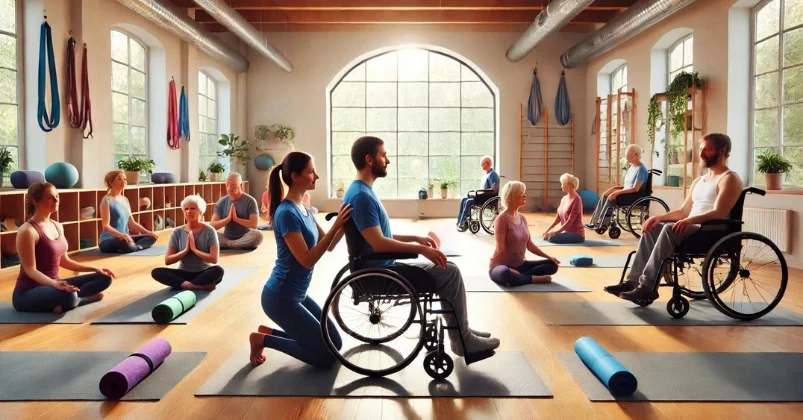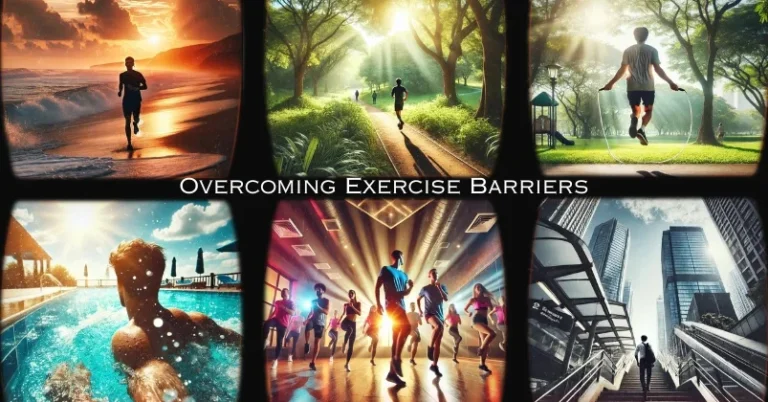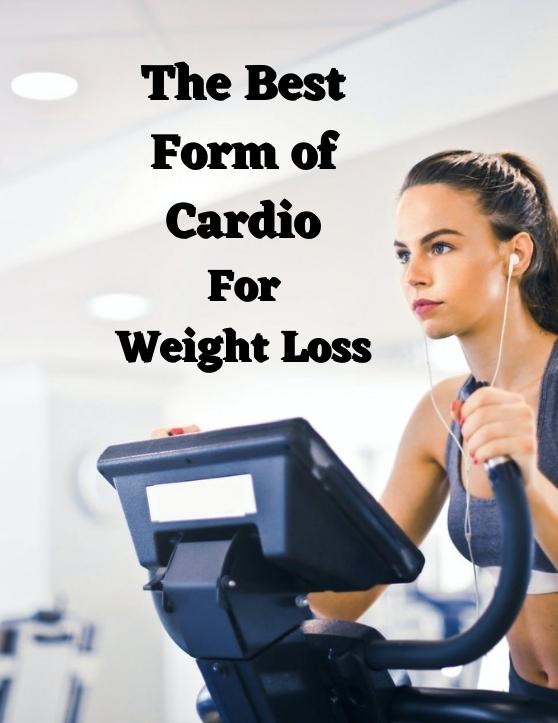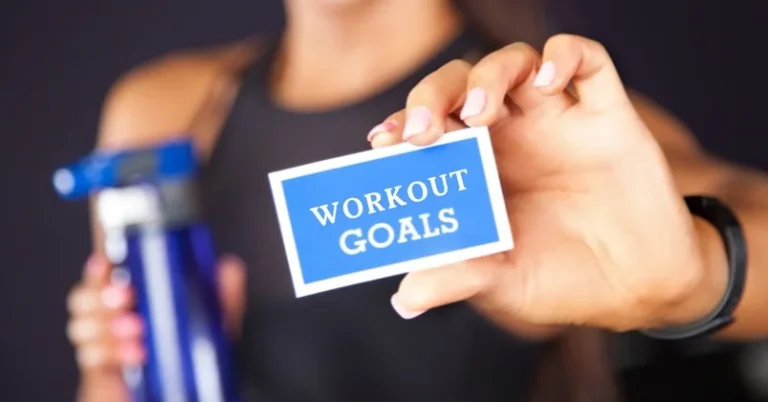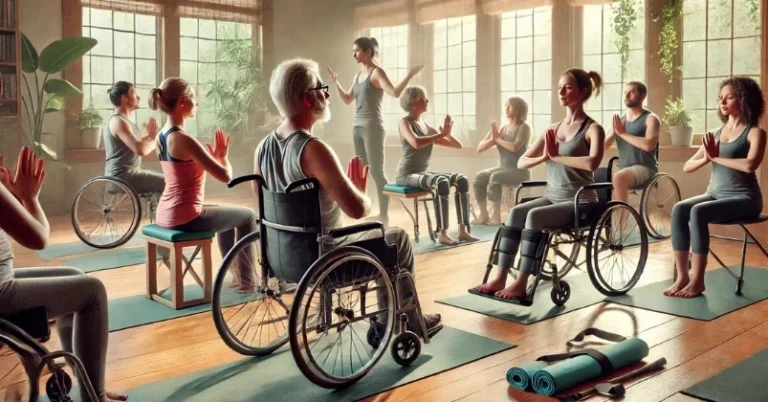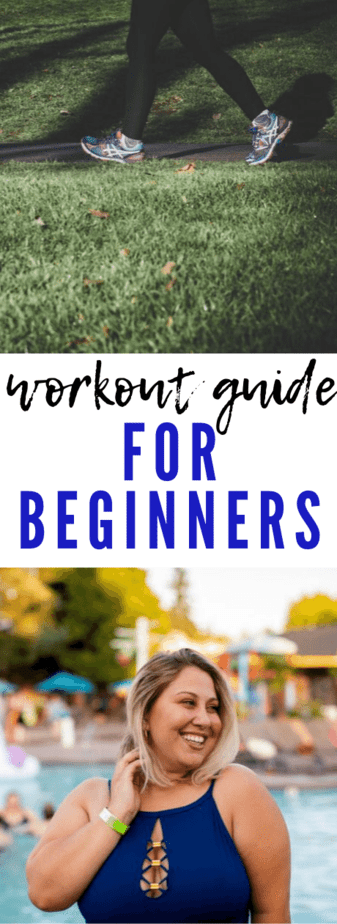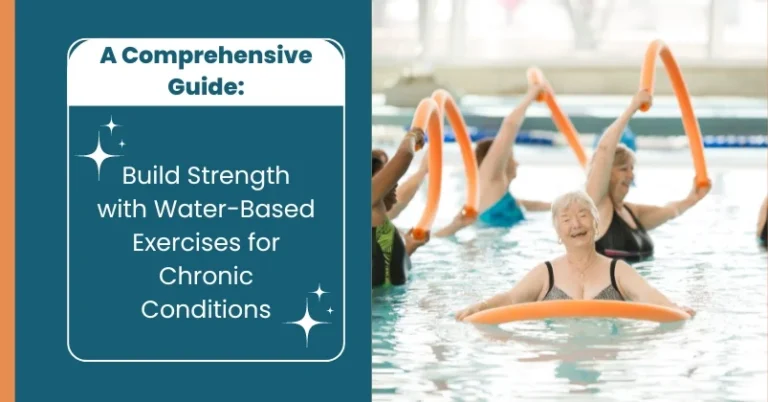Adaptive Yoga: A Comprehensive Guide for All Abilities
Adaptive yoga is a unique style of yoga that caters to individuals with different abilities, including those with disabilities, injuries, and limitations. The practice of adaptive yoga involves modifying traditional yoga poses to make them more accessible to everyone, regardless of their physical limitations. This helps to ensure that everyone can enjoy the benefits of yoga, such as increased flexibility, strength, and relaxation.
Understanding adaptive yoga involves recognizing that everyone's body is different, and what works for one person may not work for another. Adaptive yoga instructors are trained to provide modifications and variations of traditional yoga poses to accommodate different abilities. This may include using props such as blocks, straps, and blankets to help support the body in certain poses. Additionally, adaptive yoga may involve practicing yoga in a chair or using other adaptive equipment to make the practice more accessible.
The benefits of adaptive yoga are numerous. It can help to improve flexibility, strength, balance, and coordination, as well as reduce stress and anxiety. It can also help to improve overall physical and mental well-being. Adaptive yoga is a great way to connect with others who have similar abilities and to build a sense of community. It is an inclusive practice that welcomes everyone, regardless of their physical abilities.
Key Takeaways
- Adaptive yoga is a unique style of yoga that caters to individuals with different abilities, including those with disabilities, injuries, and limitations.
- The practice of adaptive yoga involves modifying traditional yoga poses to make them more accessible to everyone, regardless of their physical limitations.
- The benefits of adaptive yoga are numerous, including improving flexibility, strength, balance, and coordination, reducing stress and anxiety, and improving overall physical and mental well-being.
Understanding Adaptive Yoga
Adaptive yoga is a style of yoga that focuses on making yoga accessible to everyone, regardless of their physical or mental abilities. This style of yoga considers all bodies and abilities, and multiple variations are taught, allowing the poses to be adapted to specific needs.
Principles of Adaptive Yoga
The principles of adaptive yoga are based on the idea that yoga should be accessible to everyone. This means that poses are modified to accommodate different levels of ability and flexibility. In adaptive yoga, the focus is on finding the right pose for each individual, rather than trying to fit everyone into the same mold.
Adaptive yoga also incorporates the principles of traditional yoga, such as breath control, meditation, and mindfulness. The goal of adaptive yoga is to help individuals improve their physical, mental, and emotional well-being through the practice of yoga.
Adaptive Yoga vs Traditional Yoga
Adaptive yoga differs from traditional yoga in that it is modified to meet the needs of individuals with physical or mental disabilities. Traditional yoga is often focused on achieving specific poses and may not be accessible to everyone.
In adaptive yoga, the focus is on finding the right pose for each individual, rather than trying to fit everyone into the same mold. This means that poses are modified to accommodate different levels of ability and flexibility.
Adaptive yoga also incorporates props, such as blocks and straps, to help individuals achieve poses that may be difficult due to physical limitations. The use of props allows individuals to experience the benefits of each pose without straining their bodies.
In summary, adaptive yoga is a style of yoga that is designed to make yoga accessible to everyone, regardless of their physical or mental abilities. The principles of adaptive yoga are based on finding the right pose for each individual and incorporating the principles of traditional yoga, such as breath control, meditation, and mindfulness. By modifying poses and incorporating props, adaptive yoga allows individuals to experience the benefits of yoga without straining their bodies.
Benefits of Adaptive Yoga
Adaptive yoga is a style of yoga that is accessible to people of all ages, abilities, and body types. It offers numerous benefits that can help improve physical and mental health. Here are some of the benefits of adaptive yoga:
Improving Balance
One of the primary benefits of adaptive yoga is that it can help improve balance. Many yoga poses require you to balance on one leg or your hands and feet. By practicing these poses, you can improve your balance and stability. Adaptive yoga offers modifications and variations of poses that can be tailored to your unique needs. This makes it an excellent option for people who may have difficulty with balance due to injury, illness, or age.
Enhancing Strength
Adaptive yoga can also help enhance strength. Many yoga poses require you to hold your body weight in different positions, which can help build strength and muscle tone. Adaptive yoga offers modifications and variations of poses that can be tailored to your unique needs. This makes it an excellent option for people who may have difficulty with strength due to injury, illness, or age.
Reducing Stress and Anxiety
Adaptive yoga can be an effective way to reduce stress and anxiety. Yoga involves deep breathing and relaxation techniques, which can help calm the mind and reduce stress. Adaptive yoga offers modifications and variations of poses that can be tailored to your unique needs. This makes it an excellent option for people who may have difficulty with stress and anxiety due to injury, illness, or age.
Increasing Flexibility
Adaptive yoga can also help increase flexibility. Many yoga poses involve stretching and lengthening the muscles, which can help improve flexibility and range of motion. Adaptive yoga offers modifications and variations of poses that can be tailored to your unique needs. This makes it an excellent option for people who may have difficulty with flexibility due to injury, illness, or age.
In summary, adaptive yoga offers numerous benefits that can help improve physical and mental health. It is an excellent option for people of all ages, abilities, and body types who are looking to improve their overall well-being.
Adaptive Yoga for Different Abilities
Adaptive yoga is a style of yoga that focuses on making yoga accessible to everyone, regardless of their abilities. This style of yoga considers all bodies and abilities and allows for multiple variations of poses to be taught, allowing the poses to be adapted to specific needs.
Adaptive Yoga for Individuals with Disabilities
Adaptive yoga can be particularly beneficial for individuals with disabilities. Props such as straps and blocks can be used to help modify poses to fit the individual's needs. This can help individuals with disabilities improve their flexibility, strength, and balance, as well as reduce stress and anxiety.
According to Brain and Life, adaptive yoga can help individuals with disabilities to “bond with other Disabled people who are all on the same journey of self-discovery and self-improvement.” This can help individuals with disabilities to feel more connected and supported, which can be particularly important for those who may feel isolated or marginalized.
Adaptive Yoga for Older Adults
Adaptive yoga can also be an excellent option for older adults. As we age, our bodies may become less flexible and more prone to injury. Adaptive yoga can help older adults to improve their flexibility, strength, and balance in a safe and supportive environment.
According to Yoga Mattei, “Yoga is available to everybody.” This includes older adults who may have physical limitations or health concerns. With the help of props and modifications, older adults can participate in yoga classes and experience the many benefits that yoga has to offer.
In conclusion, adaptive yoga is an excellent option for individuals with different abilities, including those with disabilities and older adults. By modifying poses and using props, adaptive yoga can help individuals improve their flexibility, strength, and balance, reduce stress and anxiety, and feel more connected and supported.
Adaptive Yoga Poses and Modifications
Adaptive yoga is a style of yoga that adapts the movements to a person's physical abilities. Multiple variations are generally offered, allowing the poses to be adapted to people's unique needs. Adaptive yoga is suitable for people of all ages and abilities, including seniors, people with disabilities, and those recovering from injuries.
Chair-Based Yoga Poses
Chair-based yoga is a type of adaptive yoga that is suitable for people with limited mobility. It involves performing yoga poses while sitting on a chair or using a chair for support. Chair-based yoga poses are designed to improve flexibility, strength, balance, and posture. Some common chair-based yoga poses include:
- Seated forward bend
- Seated spinal twist
- Seated Warrior II
- Seated mountain pose
- Seated eagle pose
Mat-Based Yoga Poses
Mat-based yoga poses are suitable for people who can get down on the floor and perform poses on a yoga mat. However, some people may require modifications to make the poses more accessible. Modifications may include using props such as blocks, blankets, and straps to support the body and make the poses easier to perform. Some common mat-based yoga poses include:
- Downward-facing dog
- Warrior I
- Tree pose
- Cobra pose
- Child's pose
Matthew Sanford, a yoga teacher and author, is a leading advocate for adaptive yoga. He teaches yoga to people with disabilities and has developed a unique approach to yoga that emphasizes the mind-body connection. His approach to adaptive yoga focuses on using modifications to make yoga accessible to everyone, regardless of their physical abilities.
In conclusion, adaptive yoga poses and modifications can help make yoga accessible to people of all ages and abilities. Chair-based yoga poses are suitable for people with limited mobility, while mat-based yoga poses can be modified to make them more accessible. By using modifications and props, people can enjoy the benefits of yoga and improve their physical and mental well-being.
Adaptive Yoga Tools and Props
Adaptive yoga is a style of yoga that's accessible to everybody. Multiple variations are generally offered, allowing the poses to be adapted to people's unique needs. One of the key elements of adaptive yoga is the use of tools and props to support the body and ensure proper alignment. Here are some common tools and props used in adaptive yoga:
Using Blocks and Straps
Blocks and straps are two of the most commonly used props in adaptive yoga. Blocks are typically made of foam or cork and come in different sizes and shapes. They can be used to provide support and stability during standing poses or to help bring the floor closer to the body during seated poses. Straps are typically made of cotton or nylon and are used to help increase flexibility and range of motion. They can be used to help deepen stretches and provide support during poses where the hands cannot reach the feet.
Utilizing Blankets and Bolsters
Blankets and bolsters are two other tools commonly used in adaptive yoga. Blankets can be used to provide extra padding and support during poses or to help raise the hips during seated poses. Bolsters are long, cylindrical pillows that can be used to provide support and help deepen stretches. They can be used to support the back, neck, and legs during poses like Savasana (Corpse Pose) or to provide extra cushioning during seated poses.
Overall, the use of tools and props in adaptive yoga can help make the practice more accessible and enjoyable for everyone. By providing support and stability, these tools can help reduce the risk of injury and allow individuals to fully experience the benefits of yoga. Whether you're new to yoga or have been practicing for years, incorporating props into your practice can help you achieve a deeper level of relaxation, mindfulness, and physical well-being.
Teaching Adaptive Yoga
Adaptive yoga is a style of yoga that is accessible to everyone, regardless of their abilities. It is a practice that considers all bodies and abilities, and multiple variations of poses are taught, allowing the poses to be adapted to specific needs. Teaching adaptive yoga requires a unique skill set that goes beyond traditional yoga instruction. In this section, we will explore the different aspects of teaching adaptive yoga.
Adaptive Yoga Classes
Adaptive yoga classes are designed to meet the needs of people with disabilities, injuries, or other physical challenges. These classes are taught by instructors who have specialized training in adapting yoga poses to meet the needs of students with different abilities. Adaptive yoga classes can be held in a variety of settings, including community centers, rehabilitation centers, hospitals, and yoga studios.
In an adaptive yoga class, students are encouraged to work at their own pace and to modify poses to suit their needs. The instructor provides guidance and support, helping students to find variations of poses that work for them. The focus of the class is on building strength, flexibility, and balance, as well as reducing stress and promoting relaxation.
Training for Adaptive Yoga Teachers
To become an adaptive yoga teacher, one must complete specialized training that goes beyond traditional yoga instruction. This training focuses on adapting yoga poses to meet the needs of students with different abilities, including those with disabilities, injuries, or other physical challenges.
Training for adaptive yoga teachers typically includes coursework in anatomy and physiology, as well as instruction in adapting poses for different body types and abilities. It also includes instruction in working with students with disabilities, including those with visual impairments, hearing impairments, and mobility impairments.
Some organizations offer certification programs for adaptive yoga teachers, which require completion of a certain number of hours of training and demonstration of proficiency in teaching adaptive yoga. These programs provide a recognized credential that can help teachers find work teaching adaptive yoga.
In conclusion, teaching adaptive yoga requires a unique skill set that goes beyond traditional yoga instruction. Adaptive yoga classes are designed to meet the needs of people with disabilities, injuries, or other physical challenges. To become an adaptive yoga teacher, one must complete specialized training that focuses on adapting yoga poses to meet the needs of students with different abilities.
Prominent Figures and Organizations in Adaptive Yoga
Matthew Sanford and Mind Body Solutions
Matthew Sanford is a renowned figure in the world of adaptive yoga. He is a yoga teacher, author, and founder of Mind Body Solutions, a nonprofit organization that offers adaptive yoga classes and teacher training programs. Sanford has been paralyzed from the chest down since the age of 13, and he has used yoga as a tool for healing and rehabilitation.
Mind Body Solutions, a 501(c)(3) nonprofit organization, is dedicated to making yoga accessible to people with disabilities. The organization offers adaptive yoga classes, workshops, and teacher training programs, and it has trained over 1,000 yoga teachers in adaptive yoga techniques. Mind Body Solutions also provides resources and support for people with disabilities who are interested in practicing yoga.
Accessible Yoga Nonprofit
Accessible Yoga is another nonprofit organization that is dedicated to making yoga accessible to everyone, regardless of ability or background. The organization promotes specialized yoga classes and teacher training programs in adaptive yoga, and it also advocates for greater accessibility in yoga studios and gyms.
Accessible Yoga offers a range of resources and support for people with disabilities who are interested in practicing yoga. The organization provides information on adaptive yoga techniques, as well as resources for finding adaptive yoga classes and teachers. Accessible Yoga also hosts an annual conference that brings together yoga teachers, practitioners, and advocates to discuss issues related to accessibility and inclusivity in yoga.
In conclusion, Matthew Sanford and Mind Body Solutions, as well as Accessible Yoga, are two prominent figures and organizations in the world of adaptive yoga. These organizations are dedicated to making yoga accessible to people with disabilities and promoting greater inclusivity in the yoga community. Their efforts have helped to make yoga more accessible and welcoming to people of all abilities and backgrounds.
Adaptive Yoga in the Time of Covid-19
The Covid-19 pandemic has caused many individuals to experience increased levels of stress and anxiety. Adaptive yoga can be a valuable tool for managing these symptoms while also improving overall physical health. Adaptive yoga is a style of yoga that is accessible to everybody, including individuals with physical disabilities, chronic illnesses, and injuries.
One of the benefits of adaptive yoga is that it can be practiced from the comfort of your own home. Online seated yoga classes have been designed specifically for the disabled community in response to Covid-19. These classes are suitable for all abilities and ages, and they offer multiple variations of poses to be adapted to people's unique needs.
Yoga therapy and pranayama have also been used to help Covid-19 patients. Physician Ingrid Yang pioneered a breathing technique for COVID-19 patients that involves expanding the actual physical space of the heart and taking deep breaths. This technique has been shown to help patients breathe easier and reduce anxiety.
Furthermore, research indicates that yoga has the potential to strengthen cell-mediated immunity, which could be used as an effective preventive measure against Covid-19. Yoga can also help reduce inflammation, which is associated with severe Covid-19 symptoms. However, it is important to note that yoga should not be used as a substitute for medical treatment or social distancing measures.
In summary, adaptive yoga can be a valuable tool for managing stress and anxiety during the Covid-19 pandemic. Online classes designed for the disabled community offer multiple variations of poses to be adapted to people's unique needs. Yoga therapy and pranayama have also been used to help Covid-19 patients breathe easier and reduce anxiety. While yoga has the potential to strengthen immunity and reduce inflammation, it should not be used as a substitute for medical treatment or social distancing measures.
FAQs
Adaptive yoga is a style of yoga that considers all bodies and abilities. It's accessible to everyone, and multiple variations are taught, allowing the poses to be adapted to specific needs. Some of the poses that can be modified include Child's Pose, Downward-Facing Dog, and Warrior I.
Yoga can be modified for individuals with limited mobility by using props such as blocks, straps, and chairs to support the body and make poses more accessible. For example, seated twists and forward folds can be done with the support of a chair, and standing poses can be modified by using a wall for balance.
Chair yoga is a great way to incorporate yoga into your workday. Some poses that can be done at work include Seated Mountain Pose, Seated Forward Fold, and Seated Spinal Twist. These poses can help improve posture, increase circulation, and reduce stress.
Yoga is a helpful tool for managing chronic pain. It can help improve flexibility, reduce stress, and increase relaxation. Some specific poses that may help manage chronic pain include Cat-Cow, Child's Pose, and Pigeon Pose.
Adaptive yoga can help improve spine health by focusing on poses that promote spinal alignment and flexibility. Some poses that can be beneficial for spine health include Cat-Cow, Cobra Pose, and Bridge Pose.
Yoga is a great tool for relaxation and stress relief. Some poses that can be helpful for relaxation include Child's Pose, Legs Up the Wall, and Corpse Pose. These poses can help calm the mind and reduce stress and anxiety.

